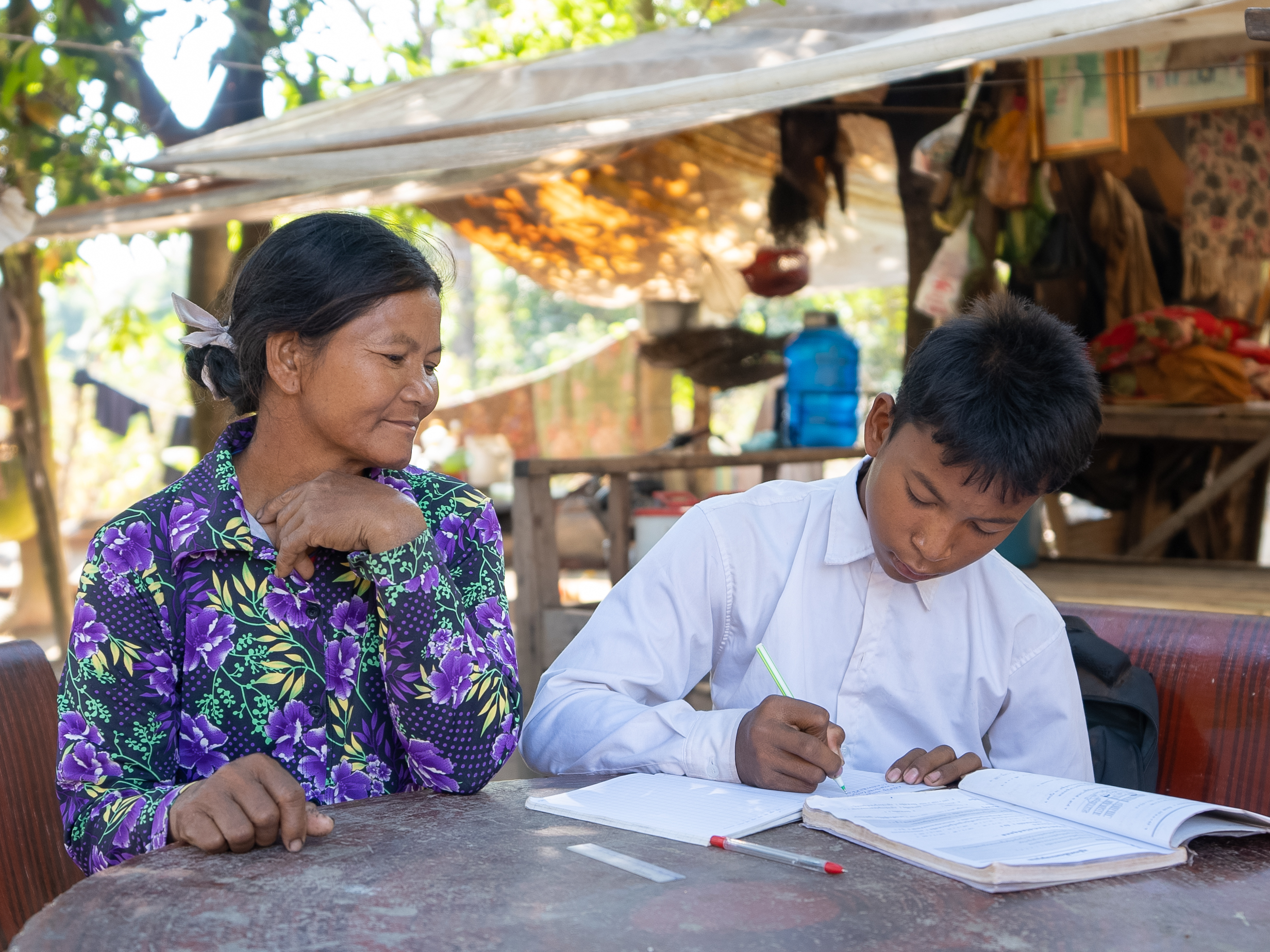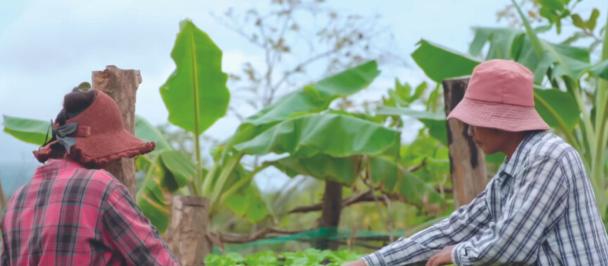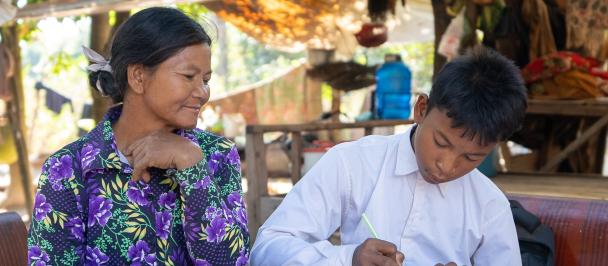Social Protection in Cambodia: What's Core got to do with it
April 24, 2025

Ms. Nhim Rorn and her son in front of their poor makeshift house, made of plastic sheets for a roof and with no walls.
As she toiled under the scorching sun in the fields of Banteay Srei, in the northwestern province of Siem Reap, Rorn was obsessed with one idea that kept her going: her children must have a better life than hers. The single mother has no education; she struggles from dawn to dusk to eke out a meagre living. “I have no savings nor a regular income, I am constantly struggling to get by. I raise my four children and provide for my poor mother’s medical expenses”, she shared.
National data reports that 26 percent of the population (over 306 thousand individuals) in Siem Reap province, located three hundred forty kilometers away from the capital Phnom Penh, are poor. Women constitute 52 percent (156,000 women). The poverty rate in Siem Reap is notably higher than the national average of 20 percent.
Despite her dire situation, Rorn was determined to keep her children in school to save them from their mother’s fate. Sitting outside her makeshift house made of plastic roof sheets with no walls, Rorn said that there were days when she felt overwhelmed and wanted to quit. However, when one door closes, another one opens. Her life started to change when her commune council registered her in the ID Poor system for receiving cash transfers and accessing other social services availed by the Royal Government of Cambodia.
With funding from the UNDP COVID-19 Rapid Response Facility and Australia, UNDP Cambodia expanded the coverage of social protection. It supported the rapid rollout of the COVID-19 cash transfer program in 2020 by providing ICT equipment to all 1,652 communes and the 25 provincial departments across the country and to the Ministry of Planning, accelerating digital transformation for timely data collection and registration of poor households. It also enabled the improvement of the ID Poor system’s targeting methodology for more transparency and inclusion. Registered households received an unconditional monthly transfer of USD 20, free healthcare and other conditional cash top-ups for pregnant women, children under two years of age, the elderly, persons with disabilities and people living with HIV/AIDS, as applicable. The core funding was critical and catalytic; it frontloaded resources for the rollout during the pandemic of the first large-scale cash transfer program in the history of the Kingdom and allowed the inclusion of women-headed households (more than 350,000), persons with disability (more than 30,000 persons), and people living with HIV/AIDS (around 24,000 individuals). As a result, twenty percent of the population, or 700,000 poor households comprising over 3 million individuals living below the poverty line of USD 2.7, were enrolled. They received 1.36 billion worth of social assistance between June 2020 and April 2024.
With the cash transfers she receives, Rorn is now able to care for her children’s education and her mother’s health and buy seeds and fertilizers for growing her vegetables. “I am happy because I am receiving monthly cash transfers from the government to cover my family’s basic needs. I am also farming around my house. I am proud to make ends meet,” Rorn says.
Although the national COVID cash transfer program was discontinued in 2024, the experience gained and systems established continue to be a solid foundation for social protection beyond the pandemic.

 Locations
Locations



